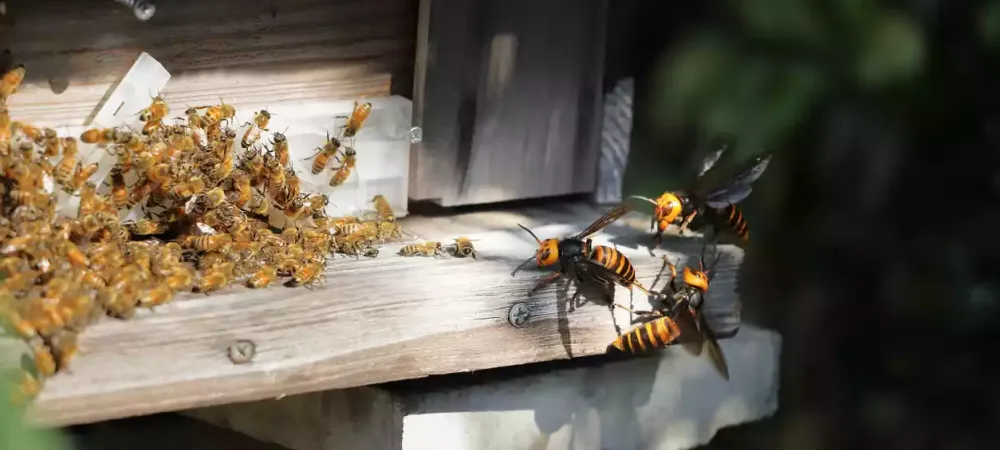The Difference Between Bees & Wasps

For most people, the differences between a wasp and a honey bee are not as important as escaping them whenever they fly too near. However, while they are both stinging insects, their differences are important when it comes to receiving proper pest control.
This post will help you determine whether you are seeing wasps or honey bees and the proper steps to take for pest control.
Body Type
The easiest way to tell which insect you’re dealing with is to look at the shape of its body. Luckily, honey bees and wasps look different enough that you should be able to tell which one you’re looking at without getting too close.
Honey bees have furry, rounded, fat bodies and fuzzy, flat legs. Wasps, on the other hand, have sleek, thin bodies and slender, hairless legs. Wasps also have a telltale curve to their torso, which makes them a bit easier to spot.
Aggressiveness
This is another way to determine whether you’re dealing with wasps or bees without getting too close.
Honey bees are generally non-aggressive. They are pollinators, so they feed on nectar and not other insects. They also don’t typically bother humans unless they are provoked.
Wasps are naturally much more aggressive than honey bees, and they are predators that feed on other insects. Wasps are also attracted to the scent of human food, especially beer and sugar.
Nesting Habits
Honey bees are social creatures, which means they live in colonies of up to 40,000 bees. They can create waxy hives or nest in places like hollowed trees or house eaves.
By contrast, social species of wasps create papery, wood pulp nests in sheltered areas like attics, trees, and porch overhangs. These nests can house up to several thousand wasps, depending on their size.
Do They Die After Stinging You?
If you’re unlucky enough to be stung by either of these insects, you probably want to know if it will die or not.
Both wasps and honey bees inject venom into your skin, but this only kills honey bees. Because honey bees have barbed stingers, it is forcefully ripped from the honey bee’s body, which ends up killing it. Wasps, however, are natural predators, so they are able to sting a target multiple times and not die.
What To Do If You Suspect You Have an Infestation
While honey bees are not as dangerous as wasps, it is important to note that neither should be taken lightly. If you are seeing an abundance of honey bees or wasps in and around your home, call Termagon for a consultation. Our pest control specialists will be able to recommend the best course of action to keep your home and yard pest-free all season long.
